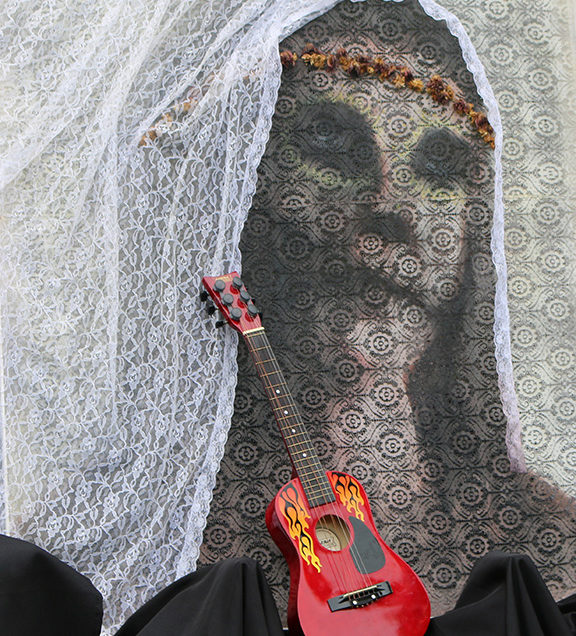CLEMSON, S.C. – This year’s celebration may be a little different, but it will still be a time to remember and celebrate loved ones who have passed away when Clemson University and the South Carolina Botanical Garden hold their third annual Day of the Dead, Día de los Muertos, celebration on Friday, Oct. 30, via Zoom.

This event will be held in both English and Spanish. The celebration in English is from 7 p.m. to 8 p.m. Eastern Time. The celebration in Spanish is from 8 p.m. to 9 p.m. Eastern Time.
Previously held at the South Carolina Botanical Garden, this event attracted close to 600 attendees in 2018 and 1,500 in 2019. This year’s celebration was moved online in response to the COVID-19 pandemic.
“To protect everyone, this important celebration will be held online this year,” said Rodrigo Martinez-Duarte, a Clemson University associate professor of mechanical engineering and chair of this year’s event. “We had such tremendous responses the two years we’ve held this celebration, we wanted to hold it again to help create awareness of the Mexican/Latino culture. The organizing committee, primarily staff and faculty from Clemson University and the Botanical Garden, has been working hard to offer the community an engaging experience.”
The Day of the Dead Festival is a traditional Latin American holiday when people celebrate and honor loved ones who have died. The festival is celebrated by several different Latino cultures. Martinez-Duarte noted this is not a sad holiday but one of celebration.
This celebration is the result of the ancient ritual venerations and offerings to the goddess Mictecacihuatl, “Lady of the Dead,” for children and adults who have died. The emphasis of this holiday is on honoring memories and uniting communities as well as using celebration and vibrant colors to lighten the dark shades of human mortality.
Lee Gill, Clemson’s chief diversity officer, said this event is representative of the university’s support of and engagement with the Hispanic community.
“Clemson is proud to host this online initiative which emphasizes the values of celebration and curiosity around the increasing diversity in our state,” Gill said. “We invite everyone to take part in this activity and learn what a celebration of the Day of the Dead means to the Hispanic community.”
This event is free, but registration is required. Please visit clemsondayofthedead.org to register before Oct. 30.

Registrants for this year’s celebration will receive a link to a virtual journey where they will learn about the history of the Day of the Dead celebration and some of its meaningful elements, which include richly decorated altars or “ofrendas” in the houses and at gravesites of the departed. These altars are common Day of the Dead traditions and feature different elements believed to facilitate the journey of loved ones from the afterlife, to welcome them at the home and to celebrate together in this special night. These elements include flowers, “cempasuchitl” or marigold, pictures of the departed, their favorite items and foods and other lively objects such as sugar skulls, skeletons, incense and candles.
Participants will learn about the history of this celebration and meanings of different altar elements, receive tutorials on how to assemble their own altars, and learn how to make pan de muerto (bread), sugar skulls and papel picado (a traditional decoration). They also will have an opportunity to watch an artistic performance of “La Llorona.” Educational segments about other traditions and symbols, including Catrinas and Calaveras Literarias (poems), are also included.
Sponsors for this year’s event include the Clemson Commission on Latino Affairs, the South Carolina Botanical Garden, the Clemson Office of Inclusion and Equity, the Consulate of Mexico at Raleigh and the Hispanic Alliance from Greenville.
-END-
Get in touch and we will connect you with the author or another expert.
Or email us at news@clemson.edu

